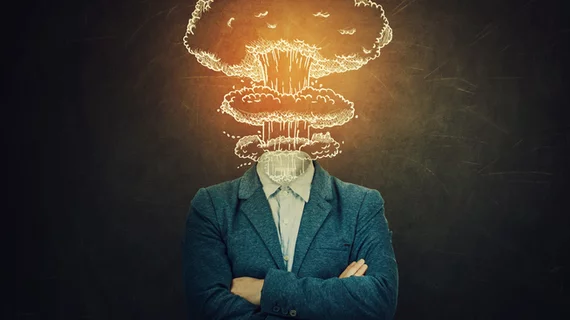‘Burnout’ is no longer enough; radiology and other specialties suffering ‘moral injury’
The term “burnout” is no longer adequate to describe the workplace stress that radiologists and other physicians endure daily. “Moral injury” more accurately denotes this phenomenon, according to a growing group of advocates.
Oftentimes, clinicians know what their patients need, but the bureaucracy of healthcare and its drive toward profit can prevent them from doing so, Kaiser Health News reported Tuesday. Las Vegas emergency physician Keith Corl, MD, for instance, knew immediately that one visitor had shingles. But he only made the diagnosis after his hospital had already gathered x-rays and conducted a series of tests, tallying $1,000 in extra charges, with no added clinical value.
“Moral injury”—first coined in medicine by MDs Wendy Dean and Simon Talbot, a psychiatrist and a surgeon, respectively—is a more apt description of such struggles, Corl told KHN.
“The real priority is speed and money and not our patients’ care. That makes it tough for doctors who know they could be doing better for their patients,” he said. “The system is flawed,” he added later, and “it’s grinding good docs and providers out of existence.”
A recent survey found that nearly half of radiologists feel burned out on the job. And “too many bureaucratic tasks,” such as paperwork and charting, was the leading cause of this fatigue, along with “too many hours at work” and the “increasing computerization of practice.”
Since originally using this term in a July 2018 STAT opinion piece, Dean and Talbot have created an advocacy group dedicated to this cause, called Moral Injury of Healthcare. They’ve given numerous talks on the topic and believe this movement is gaining momentum. Dean has heard from clinicians across specialties who are fed up with barriers to quality such as preauthorization policies, referral roadblocks and cumbersome EHRs.
“The response from each place has been consistent and surprising: ‘This is the language we’ve been looking for for the last 20 years,'” Dean told the news service.
Read more in KHN:

